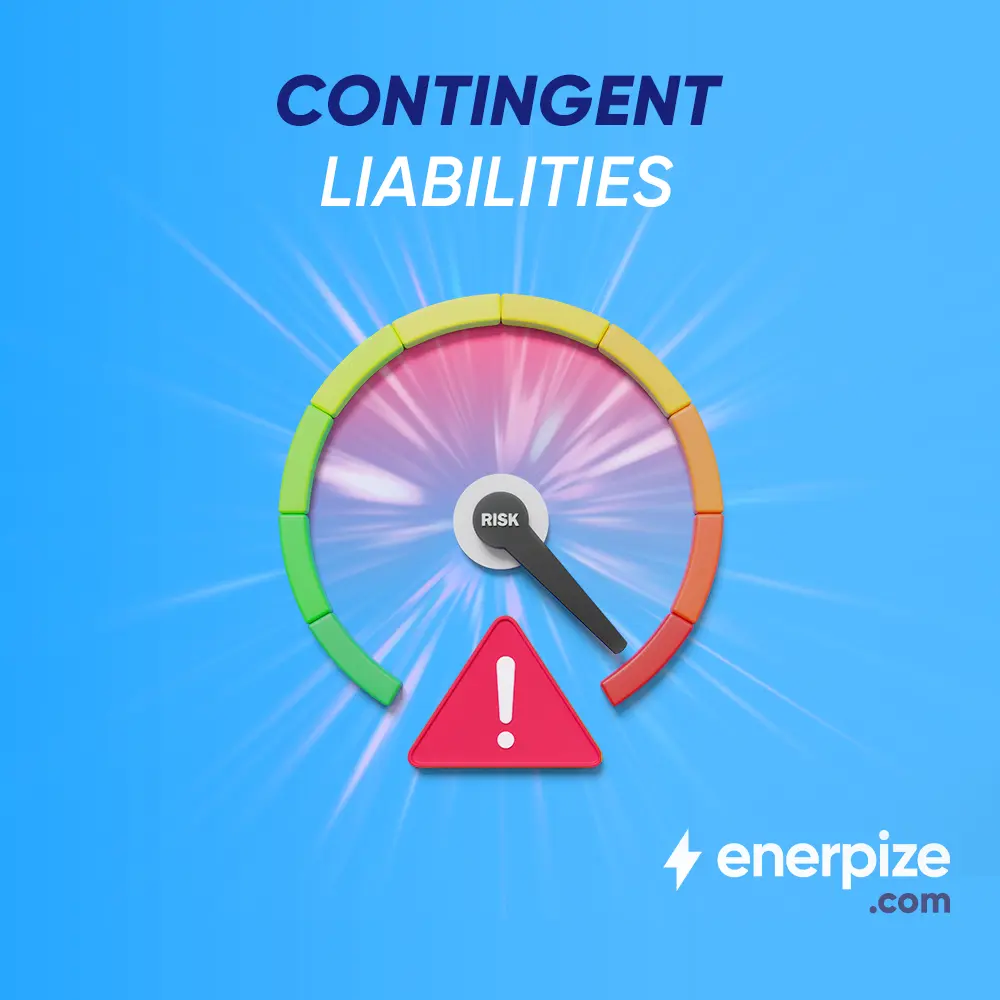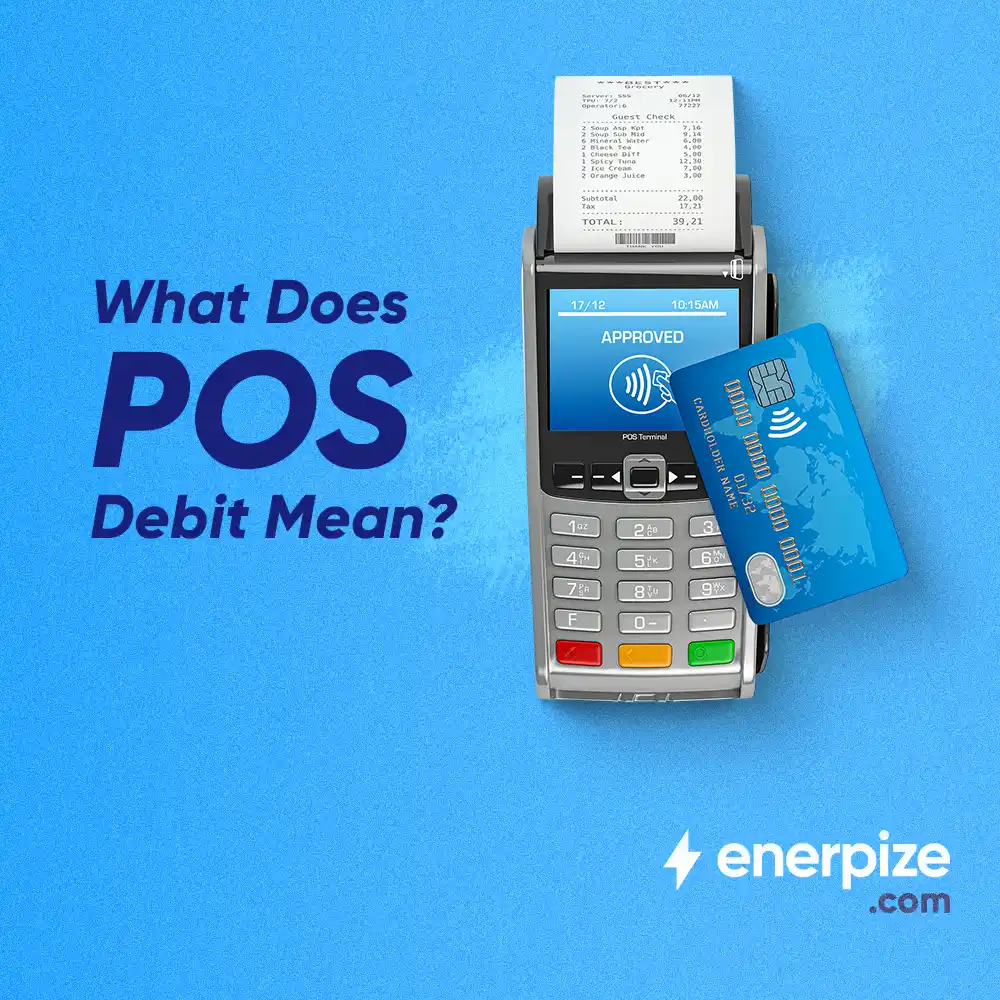Author : Mohamed Tantawy
Reviewed By : Enerpize Team
Explaining The POS Transaction on Bank Statement

Banking is a complex process involving several movements in any given account. To perform banking services accurately and compliantly, clients and banking institutions must be clear on what each movement refers to.
Clearing up confusion about transactions is even more critical when using a Point of Sale (POS) to perform transactions in-store or online. Specifically, “POS transactions on bank statements” - or POS meaning bank transaction - is a concept retailers and clients misunderstand when processing POS payments. Even more confusing, clients—and sometimes less experienced retailers—may often misunderstand what a POS transaction debit on bank statement means.
If you are a business owner or an authorized staff member, read on to learn how a POS transaction on bank statement works and associated transaction concepts.
Key Takeaways
- A POS transaction refers to payments made in-store or online using a debit or credit card, and it is reflected on a bank statement as a direct debit from the customer’s account.
- POS transactions are processed instantly: the customer’s account is debited while the retailer’s account is credited, without the need for manual bank visits.
- A POS debit specifically involves using a debit card at a terminal, requiring PIN or signature verification, and may carry processing fees or customer liability risks.
- POS vs. POS debit: While both are card-based, POS transactions can include credit or ATM access, whereas POS debit only involves a debit card at a POS terminal.
- Bank statements showing 'POS' entries help track purchases made via point-of-sale terminals, offering real-time insights into transaction history.
- Liabilities such as fraud, chargebacks, and processing fees are concerns in point of sales systems, making it essential for both customers and businesses to manage transactions securely.
What is POS Transaction?
A POS transaction is a financial transaction made in person at a conventional brick-and-mortar store on a POS device in a designated checkout area or online using a credit/debit card at a payment gateway. POS transactions are mainly carried out in different scenarios. For more on the types and benefits, check out our comprehensive explainer on everything POS transactions.
By default, all POS transactions made using any payment method are banked. When a customer initiates a POS payment process, a banking process follows suit: debiting (for the customer) and crediting (for the seller) actions are performed. This is where one main question arises—and a source of great confusion:
But how does banking a POS transaction work?
Does a POS transaction mean that the transaction is made at a bank or via a bank using a card? The following section should clear up any such confusion.
Meaning of POS Transaction on Bank Statement
The POS transaction on bank statement is a banking process that, unlike cash, involves using a debit card for payment. This debit-card-initiated payment is immediately posted to the customer’s bank account. By opting for a debit card, customers do not go to their bank to make payments for purchases made in physical or online stores. Instead, payment processing is performed in-store and on the spot, and all purchase amounts are debited from the customer’s bank account.
Now, let’s further explore how the POS banking process works by reenacting how customers typically behave at retail checkout. At a store, you are ready to check out. Typically, a range of payment methods are available in many brick-and-mortar and online stores, which customers can use conveniently according to each customer’s situation. In our current case, a debit card is used to pay for purchases. Specifically, imagine a customer—or yourself—already at a store’s register, ready to pay using a debit card. Here is where the POS transaction on bank statement comes in.
The standard checkout process in a physical store is as follows:
- When ready to pay, the customer hands in their debit card to the Register Associate or is presented with a POS device to swipe, insert, or tap their card.
- The customer enters their PIN (Personal Identification Number), verified by the POS-embedded reader.
- The POS-embedded reader authenticates card information such as the cardholder’s name (as on the card), expiry date, CVV code, and more.
- Once authenticated and funds are confirmed available, all purchase amounts are debited from and immediately posted to the customer’s bank account statement.
- Upon payment approval, two thermal receipts are generated: a sales receipt kept by the store and a second one for the customer.
Self-checkout is a less standard check-out experience. However, the self-checkout model has fizzled out recently due to increased theft rates. This should be a telltale sign that POS systems are not problematic per se. Instead, how retailers—and customers—choose to use POS systems defines POS experiences.
That is why POS debit, as explained shortly, is not a problematic payment method per se but one defined more by user behavior. In a nutshell, a POS transaction on a bank statement is a transaction that, when performed using a debit card, involves a banking process where purchase amounts are immediately debited from a customer’s bank account—in-store purchases or online transactions.
POS Debit: Definition & Uses
A POS debit is a transaction made via a POS device using a debit card. Once a debit card payment is initiated, an authentication process is performed in which the payer’s (customer’s) PIN, payment amounts, and available funds are verified and confirmed via national card networks.
Occasionally, some retailers ask for the customer’s payment, which can cause confusion. In essence, a payment is an agreement between a payer (customer) and a payee (seller). So, when customers pay for purchases, they agree with the seller (retailer, on or offline) to pay. Some sellers might, though, ask for the customer’s signature to mitigate liabilities, and in doing so, they defer or transfer the liability to the customer’s bank. Transaction liabilities come in all shapes and sizes, with all sorts of businesses anywhere. Most common liabilities include fraud, chargebacks, swipe fees, and more.
Given the exponential growth of financial, legal, and physical liabilities in recent years, POS debit comes at a hefty price for customers and sellers. For customers, POS debit processing fees are becoming a growing concern, in addition to a wide range of fine-print legalese jargon that is inexplicable to many. For sellers, liabilities (being an ever-increasing source of dispute), including security lapses, force some sellers to be wary of or switch from one POS system to another frequently.
Understandably, every technology comes with a mixed bag of benefits and drawbacks. Similarly, using best-in-industry practices, POS systems can benefit sellers and customers with minimal risks. This is more so when debit cards are used in POS transactions, a payment method fraught with liabilities if not managed wisely.
The bottom line is that debit cards used at POS locations are apt to make POS debit smooth and risk-free.
Read Also: Best Restaurant POS Systems For 2025 And How To Choose One
Differences Between POS & POS Debit
Using “POS” could be confusing when a payment is made using a debit card. In reality, though, “POS” and “POS Debit” transactions differ in how each is performed.
For POS transactions, payments could be performed via an ATM or debit in what is usually referred to as an access device where authentication is required using a PIN or signature. Therefore, POS payments include all transactions made using any payment-enabled and authorized device - whether a POS per se, an ATM, phone payment bill codes, or any electronic fund transfer-enabled device or equipment.
For POS debit, transactions are made only using a debit card at a POS setup (such as in retail stores), where standard swipe/tap/insert authentication actions via national card networks are performed to pay for purchases.
Streamline POS on Bank Statements with Enerpize
As a business owner or executive manager, you surely want to eliminate payment processing inconsistencies and unify or streamline your accounting operations to be centralized, user-intuitive, and compliant. Enerpize is best positioned to transform your accounting operations end-to-end, including all your POS transactions.
Enerpize's ERP product portfolio ensures our customers maximize in-place enablers and optimize for even optimizations. Specifically, Enerpize's online POS software, part of an integrated accounting solution, enables businesses to leverage in-place accounting practices.
At Enerpize, automation is a given. The default, in-system automation capabilities of Enerpize enable businesses of all sizes to perform a wide range of POS functions, including:
- Multi-method payment
- Efficient and customer-friendly refunds
- Installment payments
- Detailed, shareable, and printable invoices
- Taxes calculated according to each jurisdiction’s regulations
- Cash flow management
- Inventory management
- Barcode reading and printing
- Product grouping
And more.

The all-in-one Enerpize offering is every serious business's gateway to streamlining POS on bank statements. By automating in-system POS, Enerpize not only posts customer debits to corresponding bank accounts immediately but also ensures all your balance classes—assets, liabilities, funds, and revenues—are quickly, smoothly, and compliantly settled, reported, and maintained for enhanced business growth management.
Do not let partial—or worse, siloed—solutions get you into regulatory, financial, or compliance troubles. Get a sense of Enerpize’s leading POS offering with a no-caveat, hassle-free 14-day trial: free, fully-featured, and renewable at a click.
Try our POS end-to-end, retail- and e-commerce-geared ERP and focus more on what matters most: your business.
POS transactions are easy with Enerpize.
Try our POS module to manage your transactions.








